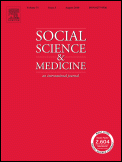Related Research Articles

Scientific literature comprises academic papers that report original empirical and theoretical work in the natural and social sciences. Within a field of research, relevant papers are often referred to as "the literature". Academic publishing is the process of contributing the results of one's research into the literature, which often requires a peer-review process.
The impact factor (IF) or journal impact factor (JIF) of an academic journal is a scientometric index calculated by Clarivate that reflects the yearly mean number of citations of articles published in the last two years in a given journal, as indexed by Clarivate's Web of Science.

Hindawi is a publisher of peer-reviewed, open access, scientific journals currently active in scientific, technical, and medical (STM) literature. It was founded in 1997 in Cairo, Egypt, but purchased in 2021 by John Wiley & Sons, a publishing company based in the United States. The company has its headquarters in London, an office in Cairo, and a virtual office address in New York City.

Nature Medicine is a monthly peer-reviewed medical journal published by Nature Portfolio covering all aspects of medicine. It was established in 1995. The journal seeks to publish research papers that "demonstrate novel insight into disease processes, with direct evidence of the physiological relevance of the results". As with other Nature journals, there is no external editorial board, with editorial decisions being made by an in-house team, although peer review by external expert referees forms a part of the review process. The editor-in-chief is João Monteiro.

PLOS One is a peer-reviewed open access mega journal published by the Public Library of Science (PLOS) since 2006. The journal covers primary research from any discipline within science and medicine. The Public Library of Science began in 2000 with an online petition initiative by Nobel Prize winner Harold Varmus, formerly director of the National Institutes of Health and at that time director of Memorial Sloan–Kettering Cancer Center; Patrick O. Brown, a biochemist at Stanford University; and Michael Eisen, a computational biologist at the University of California, Berkeley, and the Lawrence Berkeley National Laboratory.
The Journal of Medical Internet Research is a peer-reviewed open-access medical journal established in 1999 covering eHealth and "healthcare in the Internet age". The editors-in-chief are Gunther Eysenbach and Rita Kukafka. The publisher is JMIR Publications.
Clinical Infectious Diseases is a peer-reviewed medical journal published by Oxford University Press covering research on the pathogenesis, clinical investigation, medical microbiology, diagnosis, immune mechanisms, and treatment of diseases caused by infectious agents. It includes articles on antimicrobial resistance, bioterrorism, emerging infections, food safety, hospital epidemiology, and HIV/AIDS. It also features highly focused brief reports, review articles, editorials, commentaries, and supplements. The journal is published on behalf of the Infectious Diseases Society of America. The editor-in-chief is infectious disease physician Paul Sax.

The Annual Review of Public Health is a peer-reviewed academic journal that publishes review articles about public health, including epidemiology, biostatistics, occupational safety and health, environmental health, and health policy. It has had three editors: Lester Breslow, Gilbert S. Omenn, and Jonathan E. Fielding.

Social Science & Medicine is a peer-reviewed academic journal covering social science research on health, including anthropology, economics, geography, psychology, social epidemiology, social policy, sociology, medicine and health care practice, policy, and organization. It was established in 1967 and is published by Elsevier.
BMC Medicine is a peer-reviewed electronic-only medical journal published since 2003 by BioMed Central which is part of Springer Nature. It is described as "the flagship medical journal of the BMC series. An open access, open peer-reviewed general medical journal, BMC Medicine claims that it publishes outstanding and influential research in all areas of clinical practice, translational medicine, medical and health advances, public health, global health, policy, and general topics of interest to the biomedical and sociomedical professional communities".
The Scientific World Journal is a peer-reviewed scientific journal covering fields in the life sciences ranging from biomedicine to environmental sciences. It was established in 2001 and is published by Hindawi Publishing Corporation. The journal was delisted in the 2015 Journal Citation Reports because of "anomalous citation patterns".
Cancer Epidemiology, Biomarkers & Prevention is a peer-reviewed medical journal devoted to research in the field of cancer epidemiology. Topics include descriptive, analytical, biochemical, and molecular epidemiology, the use of biomarkers to study the neoplastic and preneoplastic processes in humans, chemoprevention and other types of prevention trials, and the role of behavioral factors in cancer etiology and prevention. It is published by the American Association for Cancer Research and co-sponsored by the American Society of Preventive Oncology.

GeroScience is a premier bi-monthly, international, peer-reviewed journal that publishes cutting-edge research related to the biology of aging, pathophysiology of age-related diseases, and research on biomedical applications that impact aging and/or the pathogenesis of diseases associated with old age. GeroScience publishes manuscripts that cover the entire spectrum of geroscience, ranging from basic science, translational and clinical research, to epidemiology and public health interventions, all centered around aging research.
Scholarly peer review or academic peer review is the process of having a draft version of a researcher's methods and findings reviewed by experts in the same field. Peer review is widely used for helping the academic publisher decide whether the work should be accepted, considered acceptable with revisions, or rejected for official publication in an academic journal, a monograph or in the proceedings of an academic conference. If the identities of authors are not revealed to each other, the procedure is called dual-anonymous peer review.

The Journal of Veterinary Diagnostic Investigation is an international peer-reviewed academic journal published bimonthly in English that publishes papers in the field of Veterinary Sciences. The journal's editor is Grant Maxie, DVM, PhD, DACVP. The Journal has been in publication since 1989 and is currently published by SAGE Publications in association with American Association of Veterinary Laboratory Diagnosticians, Inc.
Frontiers Media SA is a publisher of peer-reviewed, open access, scientific journals currently active in science, technology, and medicine. It was founded in 2007 by Kamila and Henry Markram. Frontiers is based in Lausanne, Switzerland, with other offices in London, Madrid, Seattle and Brussels. In 2022, Frontiers employed more than 1,400 people, across 14 countries. All Frontiers journals are published under a Creative Commons Attribution License.

eLife is a not-for-profit, peer-reviewed, open access, scientific journal for the biomedical and life sciences. It was established at the end of 2012 by the Howard Hughes Medical Institute, Max Planck Society, and Wellcome Trust, following a workshop held in 2010 at the Janelia Farm Research Campus. Together, these organizations provided the initial funding to support the business and publishing operations. In 2016, the organizations committed US$26 million to continue publication of the journal.
Epidemiologic Reviews is an annual peer-reviewed scientific journal covering epidemiology and published by Oxford University Press on behalf of the Johns Hopkins Bloomberg School of Public Health. The Journal was established in 1979 by Neal Nathanson and Philip E. Sartwell. The longest running editor-in-chief was Haroutune Armenian. The current editor-in-chief is David Celentano of the Johns Hopkins Bloomberg School of Public Health.

The Journal of Neuroscience Methods is a peer-reviewed scientific journal covering scientific techniques and protocols used in any branch of neuroscience research. It was established in 1979. The editor-in-chief is Giuseppe Di Giovanni, Professor of Neuroscience at the University of Malta and Honorary Professor at Cardiff University, UK. Journal Neuroscience Methods is published 18 times a year by Elsevier.
Ethnicity & Disease is a quarterly peer-reviewed international public health journal covering the relationship between ethnicity and health. It was established in 1991 and is published by Ethnicity and Disease, Inc. The journal exclusively publishes information on the causal and associative relationships in the etiology of common illnesses through the study of ethnic patterns of disease. Quarterly issues include original reports, reviews, editorials, perspectives, commentaries and letters on topics such as ethnic differentials in disease rates, the impact of migration on health status, social and ethnic factors related to health care access, and metabolic epidemiology.
References
- ↑ World Health Organization. Bulletin of the World Health Organization: Read the Bulletin. Accessed 21 July 2011.
- ↑ International Society for Equity in Health. About International Journal for Equity in Health. Accessed 21 July 2011.
- ↑ BioMed Central. About BMC Public Health. Accessed 21 July 2011.
- 1 2 3 Smith R (March 2006). "The trouble with medical journals". J. R. Soc. Med. 99 (3): 115–119. doi:10.1177/014107680609900311. PMC 1383755 . PMID 16508048. Archived from the original on 2009-09-02.
- ↑ López-Abente, Gonzalo; Muñoz-Tinoco, Concha (2005). "Time trends in the impact factor of Public Health journals". BMC Public Health. 5: 24. doi: 10.1186/1471-2458-5-24 . PMC 555948 . PMID 15777471.
- ↑ University of Massachusetts Medical School. Top 25 Public Health Journals by Impact Factor. Archived 2011-10-06 at the Wayback Machine Evidence-Based Practice for Public Health Project, citing 2005 Journal Citation Reports (JCR) Science and Social Science Editions.
- ↑ University of Massachusetts Medical School. Top 25 Public Health Journals. Evidence-Based Practice for Public Health, citing 2009 Journal Citation Reports (JCR) Science and Social Science Editions.